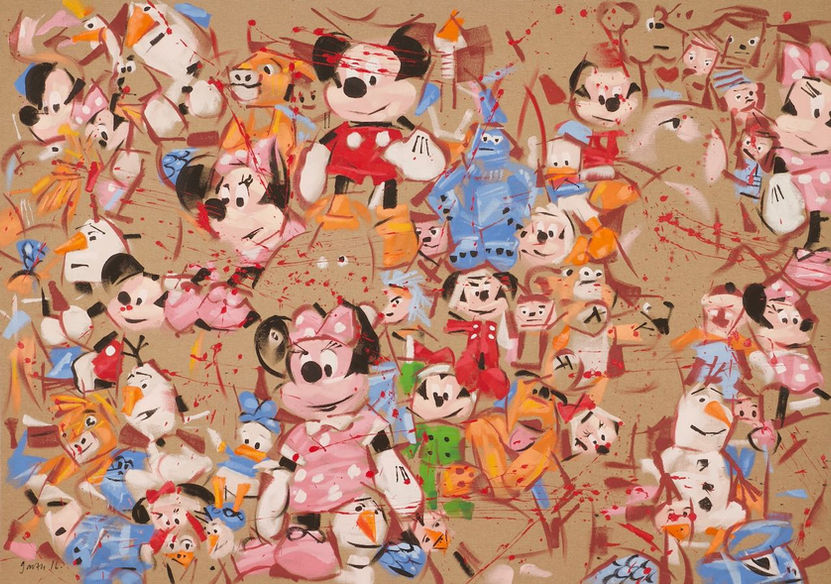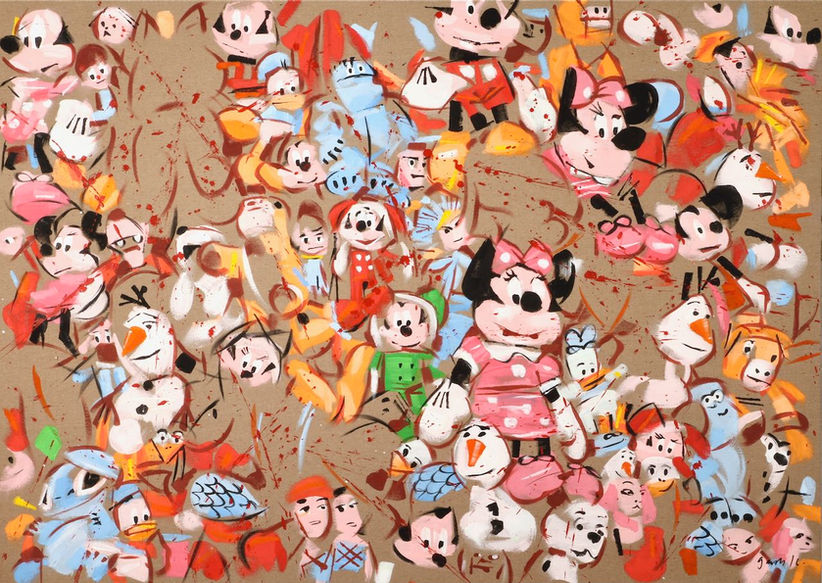The Silent Crowd
Silent Crowd touches upon themes previously explored in the past by the artist: the excesses of consumerist society; the blurring of reality and fantasy; and the personification of nature. Here we experience a dystopian world superseded by a “cartoon-esque” replica of itself; like a renegade Disney.
Dystopia in Toyland – Notes on the Silent Crowd, by Oliver Dixon.
These paintings draw the viewer in with their bright colours, the disarming happy faces and their cartoon menageries, whereupon closer inspection we experience a sense of disquiet when the scenes depicted start to take form. They plunge us dizzily into the ethical dilemmas that surround us all today.
While on the surface referencing a mash-up of artistic sources – neo-Pop, the messy Abstract Expressionism of de Kooning and Pollock, even the visceral impact of early Francis Bacon – these large canvases immediately draw the eye in with their bright, hectic colour-patterns and apparently playful, half-comical imagery. However, this bricolage of cartoon fantasia belies a darker subtext, its characters compressed claustrophobically against each other so that they merge and mutate into distorted chimera. What’s more, red spatterings criss-cross the paintings and undercut the frivolity of the faces crowding in on us, as though the horror-mannequin Chucky has gone on a knife-spree through the cast of Toy Story.
These bold and bizarre works effectively capture the paradoxes of a culture adrift between disneyfied banality and de-humanisation. If “artists are the antennae of their race” (as Ezra Pound suggested) they could be said to be emotionally timely and politically resonant.
They build on themes and strategies that Bowden has obsessively returned to throughout his career and represent a new resolve to explore broader events through the lens of his ambitious personal vision.
























